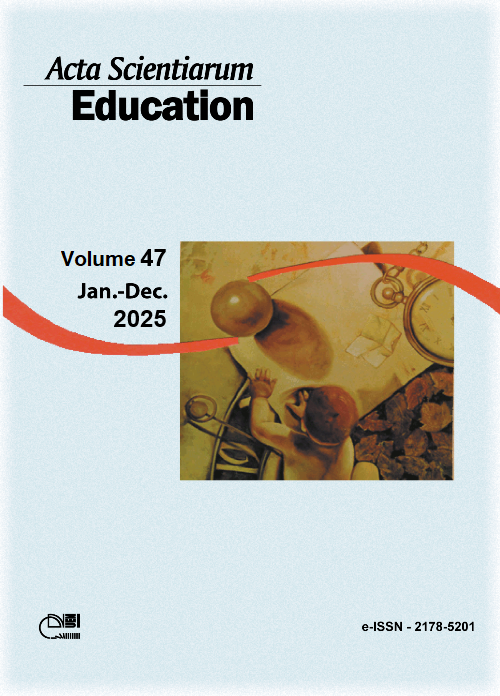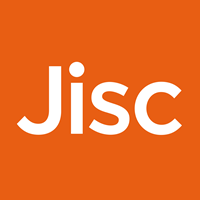Lifestyle of university students and its repercussions on health: integrative review
Abstract
Lifestyle represents modifiable behavior patterns that can impact individuals' health. The objective of this study was to describe the available scientific evidence regarding the lifestyle of university students and its repercussions on the health conditions of this population. This is an integrative review conducted from August to September 2022. The search was performed in the electronic databases: CINAHL, MEDLINE, SciELO, SCOPUS, and Web of Science. For this purpose, the controlled descriptors 'students', 'universities', 'lifestyle', and 'health', indexed in DeCS/MeSH, respectively, were used. The Boolean operator 'AND' was employed as a connector. Only articles published in the last ten years (2012 to 2022) and in Portuguese, English, and Spanish were included. After the searches, 3,029 articles were identified. With the application of the inclusion/exclusion criteria, eight articles remained that answered the study's guiding question: "What is the lifestyle of university students and what are its repercussions on the health conditions of this population?". Analyzing the results of the included studies, it was observed that university students presented an inadequate lifestyle with poor eating habits, smoking, alcoholism, insufficient physical activity, and abnormal sleep patterns, which consequently relate to health problems presented by these students such as general/abdominal obesity, low serum vitamin D levels, osteopenia/osteoporosis, increased LDL-cholesterol, male sexual dysfunction, depressive symptoms, current and future mental health problems, and suboptimal health status. Therefore, it was possible to observe that the university lifestyle can negatively impact the health conditions of this population. In this regard, the present study points out the relevance of monitoring and the adoption of proactive health education measures by health authorities and educational institutions aimed at improving the quality of life of students.
Downloads
References
Alves, T. A., Lira, A. C. S., & Pachú, C. O. (2021). Aspectos biopsicossociais relacionados ao consumo de tabaco entre universitários: uma revisão integrativa. Research, Society and Development, 10(7), 1-9. http://dx.doi.org/10.33448/rsd-v10i7.16250
Ansari W. E., Sebena, R., & Stock, C. (2014). Do the importance of religious faith and healthy lifestyle modify the relationships between depressive symptoms and four indicators of alcohol consumption? A survey of students at seven universities in England, Wales and Northern Ireland. Substance Use & Misuse, 49(3), 211-20. http://dx.doi.org/10.3109/10826084.2013.824476
Barros, G. R., Santos, S. F. S., Andaki, A. C. R., & Sousa, T. F. (2021). Sobrepeso e obesidade em universitários: prevalências e fatores associados. Revista Brasileira de Atividade Física & Saúde, 26(1), 1-9. https://doi.org/10.12820/rbafs.26e0225
Barros, M. S. M. R., & Costa, L. S. (2019). Perfil do consumo de álcool entre estudantes universitários. Revista Eletrônica Saúde Mental Álcool e Drogas, 1(15), 4-13. http://dx.doi.org/10.11606/issn.1806-6976.smad.2019.000353
Dázio, E. M. R., Zago, M. M. F., & Fava, S. M. C. L. (2016). Use of alcohol and other drugs among male university students and its meanings. Revista da Escola de Enfermagem da USP, 50(5), 785-791. http://dx.doi.org/10.1590/s0080-623420160000600011
Dutra, S. M., Freitas, T., & Porto, E. F. (2017). A influência do sobrepeso e obesidade sobre o estilo de vida. Life Style Jounal, 4(1), 15-30.
Ferreira, M. J. S. F., Lima, R. F., Albuquerque, A. J., Santos, V. E. F. A., Silva, A. R. S., & Medeiros, C. S. Q. (2013). O cuidado à criança com deficiência renal: uma revisão integrativa da literatura. Cadernos de Graduação – Ciências Biológicas e da Saúde Facipe, 1(6), 37-49. https://doi.org/10.34119/bjhrv4n4-054
Franco, A. S. G., Cardoso, M. N., & Silva, K. C. C. (2021). A physical therapist approach in erectile dysfunction. Research, Society and Development, 10(13), 1-11. http://dx.doi.org/10.33448/rsd-v10i13.21156
Garcia, A. K. A., Fonseca, L. F., Aroni, P., & Galvão, C. M. (2016). Estratégias para o alívio da sede: revisão integrativa da literatura. Revista Brasileira de Enfermagem, 69(6), 1215-1222. http://dx.doi.org/10.1590/0034-7167-2016-0317
Hammad, L. F., & Benajiba, N. (2017). Lifestyle factors influencing bone health in young adult women in Saudi Arabia. African Health Sciences, 17(2), 524-531. http://dx.doi.org/10.4314/ahs.v17i2.28
Hernández-Corona, D. M., Ángel-González, M., Vázquez-Colunga, J. C., Lima-Colunga, A. B., Vázquez-Juárez, C. L., & Colunga-Rodríguez, C. (2021). Hábitos de alimentación asociados a sobrepeso y obesidad en adultos mexicanos: una revisión integrativa. Ciencia y Enfermeria, 27(7), 1-13. http://dx.doi.org/10.29393/ce27-7hadh60007
Joh, H.-K., Lim, C. S., & Cho, B. (2015). Lifestyle and dietary factors associated with serum 25-hydroxyvitamin D levels in Korean young adults. Journal of Korean Medical Science, 30(8), 1110-1120. http://dx.doi.org/10.3346/jkms.2015.30.8.1110
Kakushi, L. E., & Évora, Y. D. M. (2016). Social networking in nursing education: integrative literature review. Revista Latino-Americana de Enfermagem, 24(1), 1-12. http://dx.doi.org/10.1590/1518-8345.1055.2709
Ma, C., Xu, W., Zhou, L., Ma, S., & Wang, Y. (2018). Association between lifestyle factors and suboptimal health status among Chinese university freshmen: a cross-sectional study. Bmc Public Health, 18(105), 1-9. http://dx.doi.org/10.1186/s12889-017-5002-4
Madeira, F. B., Filgueira, D. A., Bosi, M. L. M., & Nogueira, J. A. D. (2018). Estilos de vida, habitus e promoção da saúde: algumas aproximações. Saúde e Sociedade, 27(1), 106-115. http://dx.doi.org/10.1590/s0104-12902018170520
Martin, L. A., Critelli, J. W., Doster, J. A., Powers, C., Purdum, M., Doster, M. R., & Lambert, P. L. (2013). Cardiovascular risk: gender differences in lifestyle behaviors and coping strategies. International Journal of Behavioral Medicine, 20(1), 97-105. http://dx.doi.org/10.1007/s12529-011-9204-3
Mendes, K. D. S., Silveira, R. C. C. P., & Galvão, C. M. (2008). Revisão integrativa: método de pesquisa para a incorporação de evidências na saúde e na enfermagem. Texto & Contexto – Enfermagem, 17(4), 758-764. http://dx.doi.org/10.1590/s0104-07072008000400018
Merchán-Hamann, E., & Tauil, P. L. (2021). Proposta de classificação dos diferentes tipos de estudos epidemiológicos descritivos. Epidemiologia e Serviços de Saúde, 30(1), 1-13. http://dx.doi.org/10.1590/s1679-49742021000100026
Mogre, V., Nyaba, R., Aleyira, S., & Sam, N. B. (2015). Demographic, dietary and physical activity predictors of general and abdominal obesity in university students: a cross-sectional study. SpringerPlus, 4(226), 1-8. http://dx.doi.org/10.1186/s40064-015-0999-2
Moreira, A. S., Paixão, J. T. S., & Melo, G. C. (2023). Universitários e o uso do preservativo como método de prevenção das infecções sexualmente transmissíveis. Revista Psicologia e Saúde, 14(4), 127-142. http://dx.doi.org/10.20435/pssa.v14i4.2108
Mota, A., Matias, A. G., Braga, A. E. P., Barros, A. V. V., Melo, D. F., Moraes, D. G., Oliveira, F. N., & Villela, E. F. M. (2020). Hábitos alimentares de estudantes de uma universidade pública no sudoeste goiano –um estudo transversal. Brazilian Journal of Development, 6(10), 79301-79317. http://dx.doi.org/10.34117/bjdv6n10-384
Pompeo, D. A., Rossi, L. A., & Galvão, C. M (2009). Revisão integrativa: etapa inicial do processo de validação de diagnóstico de enfermagem. Acta Paulista de Enfermermagem, 22(4), 434-438. https://doi.org/10.1590/S0103-21002009000400014
Ramis, T. R., Mielke, G. I., Habeyche, E. C., Oliz, M. M., Azevedo, M. R., & Hallal, P. C. (2012) Tabagismo e consumo de álcool em estudantes universitários: prevalência e fatores associados. Revista Brasileira de Epidemiologia, 2(15), 376-385. https://doi.org/10.1590/S1415-790X2012000200015
Santos, C. M. C., Pimenta, C. A. M., & Nobre, M. R. C. (2007). The PICO strategy for the research question construction and evidence search. Revista Latino-Americana de Enfermagem, 15(3), 508-511. https://doi.org/10.1590/S0104-11692007000300023
Sarris, A. B., Nakamura, M. C., & Fernandes, L. G. R., Staichak, R. L., Pupulim, A. F., & Sobreiro, B. P. (2016). Fisiopatologia, avaliação e tratamento da disfunção erétil: artigo de revisão. Revista de Medicina, 95(1), 18-29. https://doi.org/10.11606/issn.1679-9836.v95i1p18-29
Silva Junior, S. C. (2020). Saúde mental e física, comportamentos de risco e vivências acadêmicas de primeiranistas de psicologia e fonoaudiologia [Dissertação de Mestrado, Universidade Estadual Paulista “Júlio de Mesquita Filho”.
Silva, T. M. O. (2022). Consumo de alimentos ultraprocessados em jovens universitários e sua associação com o excesso de peso e de gordura corporal [Monografia de Conclusão de Graduação, Universidade Federal de Pernambuco].
Soares, G. F. C., & Andrade, E. G. S. (2019). Osteoporosis: one of the main factors responsible for fractures in the elderly and its relevance. Revista de Iniciação Científica e Extensão, 2(1), 24-29. http://dx.doi.org/10.5305/reuol.7057-60979-3-SM-1.1003sup201622
Sousa, T. R., & Prati, S. R. A. (2021). Analysis of the lifestyle and risk behaviors of Physical Education students. Research, Society and Development. 10(4), 1-9. http://dx.doi.org/10.33448/rsd-v10i4.14432
Stillwell, S. B., Fineout-Overholt, E., Melnyk, B. M., & Williamson, K. M. (2010). Evidence-based practice, step by step: searching for the evidence. American Journal of Nursing, 110(5), 41-47. http://dx.doi.org/10.1097/01.naj.0000372071.24134.7e
Ursi, E. S. (2005). Prevenção de lesões de pele no perioperatório: revisão integrativa da literatura [Dissertação de Mestrado, Universidade de São Paulo].
Velten, J., Bieda, Â., Scholten, S., Wannemüller, A., & Margraf, J. (2018). Lifestyle choices and mental health: a longitudinal survey of German and Chinese students. BMC Public Health, 18(632), 1-15. http://dx.doi.org/10.1186/s12889-018-5526-2
World Health Organization [WHO]. (1998). Health Promotion Glossary. https://www.who.int/publications/i/item/WHO-HPR-HEP-98.1
Yang, H., Chen, Q., Zhou, N., Sun, L., Bao, H., Tan, L., Chen, H., Zhang, G., Ling, X., Huang, L., Li, L., Ma, M., Yang, H., Wang, X., Zou, P., Peng, K., Lu, K., Liu, T., Cui, Z., ... Cao, J. (2015). Lifestyles associated with human semen quality: results from the MARHCS cohort study in Chongqing, China. Medicine, 94(28), 1-12. http://dx.doi.org/10.1097/md.0000000000001166

This work is licensed under a Creative Commons Attribution 4.0 International License.
DECLARATION OF ORIGINALITY AND COPYRIGHTS
I declare that this article is original and has not been submitted for publication in any other national or international journal, either in part or in its entirety.
The copyright belongs exclusively to the authors. The licensing rights used by the journal are the Creative Commons Attribution 4.0 (CC BY 4.0) license: sharing (copying and distributing the material in any medium or format) and adaptation (remixing, transforming, and building upon the material thus licensed for any purpose, including commercial purposes) are permitted.
It is recommended that you read this link for more information on the subject: providing credits and references correctly, among other crucial details for the proper use of the licensed material.













































